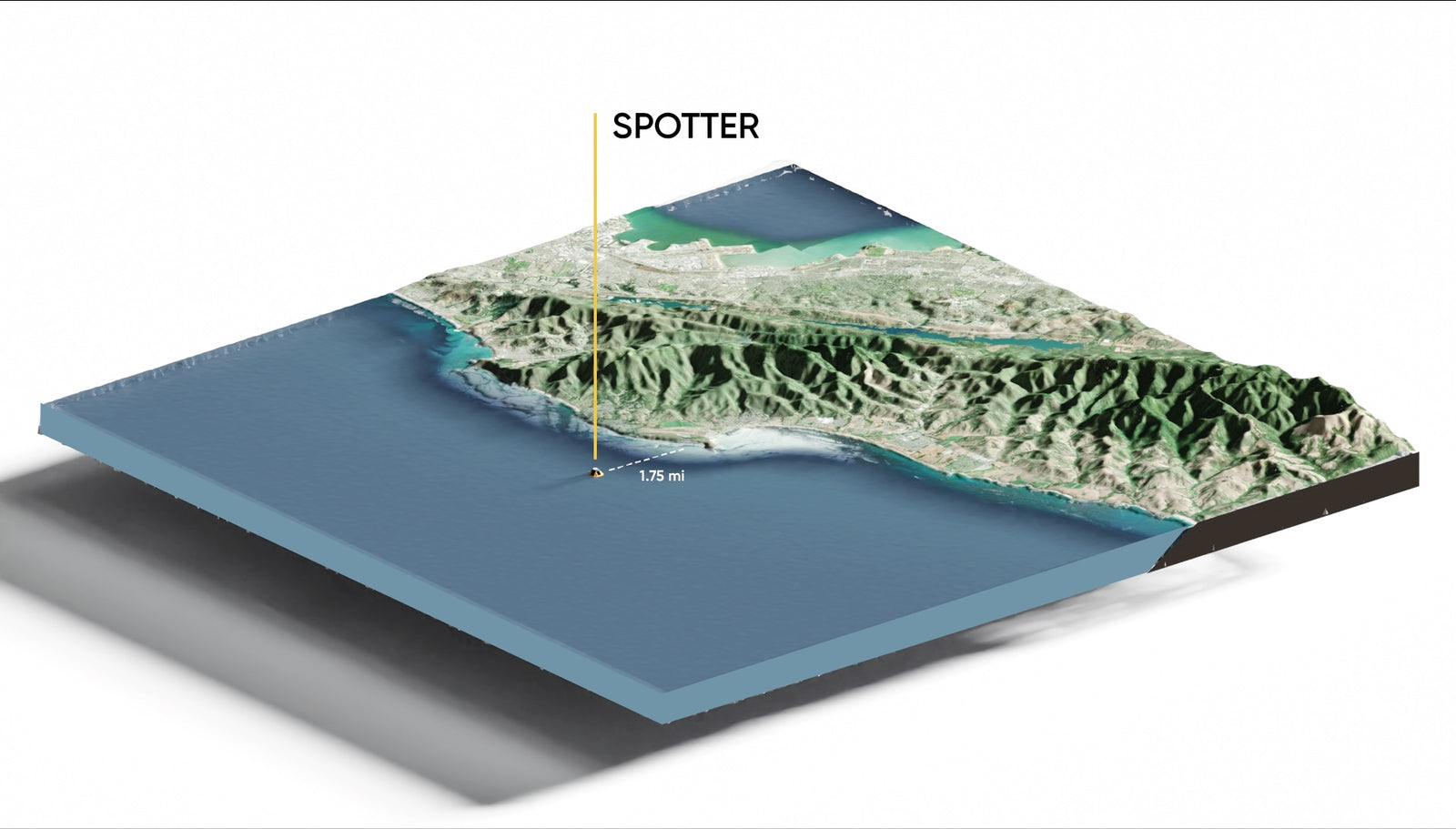Your Cart is Empty
Subscribe To Get a FREE Wetsuit Dryer with every Full-length Wetsuit Order
Subscribe To Get a FREE Wetsuit Dryer with every Full-length Wetsuit Order

Surf Technology - SoFar x Grant Washburn
July 30, 2024 4 min read
Sofar - Unlocking The Mystery Of The Ocean
Sofar's mission is to make ocean data more accessible to a wide range of individuals and organisations. They use a vast network of Spotter buoys to collect data individually and then connect with other buoys and 3rd party data to provide incredibly accurate localised realtime information and forecasts.

The range of information depends on the exact type of Spotter deployed, but it's possible to determine wave spectra, atmospheric pressure, wind, temperature, water level, subsurface temperature, currents, turbidity, acidity and more. All of this information can be viewed on easy-to-read dashboards showing your specific network of buoys and any others you might be connected to.
This information is being used for environmental assessments, improving transportation routes and a range of organisations seeking to understand the ocean more accurately. ISURUS ambassador Grant Washburn is using his Sofar Spotter to surf better waves!
In this interview, Grant tells the story of his love of big waves from an early age and how he discovered Mavericks - a wave that no-one believed existed until the first grainy images were released in 1991. He also describes how he uses the Spotter platform to understand the local conditions and why the waves break in certain ways on different days.
Mavericks became Grant's playground and inspires his quest for more accurate information about the waves there to this day:
Using Innovative Buoy Technology For Better Swell Forecasting
All that data is perfect for getting incredibly accurate data that can improve the forecasting prowess for surfing. Grant is not using this technology at his local beach break - he's employing it at one of the most dangerous waves on earth - Mavericks.
When you're jumping on the shoulders of 50 foot giants, you want all the assistance you can get. Despite the size and power, Mavericks is a fragile, fickle beast - slight changes in local wind conditions and swell direction can have a big impact on the way the wave breaks.
Grant has been surfing Mavericks for over 30 years and has seen his share of giants being ridden and huge wipeouts. In the past, this spot was only covered by sparsely available buoys deployed for shipping and aviation routes. With the Sofar Spotter deployed Grant can login to his app and check realtime data to plan his sessions.

Turning Potential Danger Into The Wave of a Lifetime
Grant has been using the Sofar Platform at Mavericks for over 5 years and it's provided a rich source of data. It's also got the potential to avoid some serious harm, as Grant realised on the morning of April 22nd back in 2022.
“So this swell came and it was a big swell, but not giant by Mavericks standards.” said Washburn. “Nothing that any of us weren’t used to riding. It was kind of what you’d call ‘average Mavericks,’ which is big waves, but not 50 feet.”
Then, something unusual happened.
“A guy took a small one and I was watching him,” said Washburn. “And right after he fell, I turned around and every single other person was way outside of me bailing their boards as this much bigger wave just ate everyone.”
This was the ghost set that appeared out of nowhere.
“Even then I was thinking, ‘Yeah, the buoy probably caught this,’” said Washburn.
Here's actual footage of the clean-up set that caught the pack:
With the Spotter positioned around 1.75 miles out to sea it's in the right position to pick-up changes in the ocean that will effect the swells that hit this rugged and remote coastline at Half Moon Bay.

The team at Sofar were as excited as Grant to dig deeper into the data and find out what had happened that day to create this clean-up set.
They found that swell thousands of miles away in the North Pacific 10 days earlier had propagated across the Pacific. With knowledge of the swell's origin they were able to look at the local buoy-level data to determine what had happened. Sure enough, by mapping all the waves over 5m they were able to see the exact wave at 11:22 that had maxed out the line-up.
This time there was only a single dazed surfer who was quickly rescued. The hope is that in the future early warning can reduce surprises like this and enable surfers to catch monster waves instead of getting caught inside by them!
Grant presented the data shared in this postwith the Big Wave Risk Assessment Group at a summit in Half Moon Bay.
“The crew was very impressed by the depth of data,” said Washburn. “No one has seen a specific wave tied to a buoy report, and the peak waves over 24 hours is also very compelling for safety and rescue, harbor patrol, and, of course, the surfers.”
You can get more information about the Spotter product by visiting this page- the bigger the network the better the data is for everyone.


Subscribe
Sign up to get the latest on sales, new releases and more …













